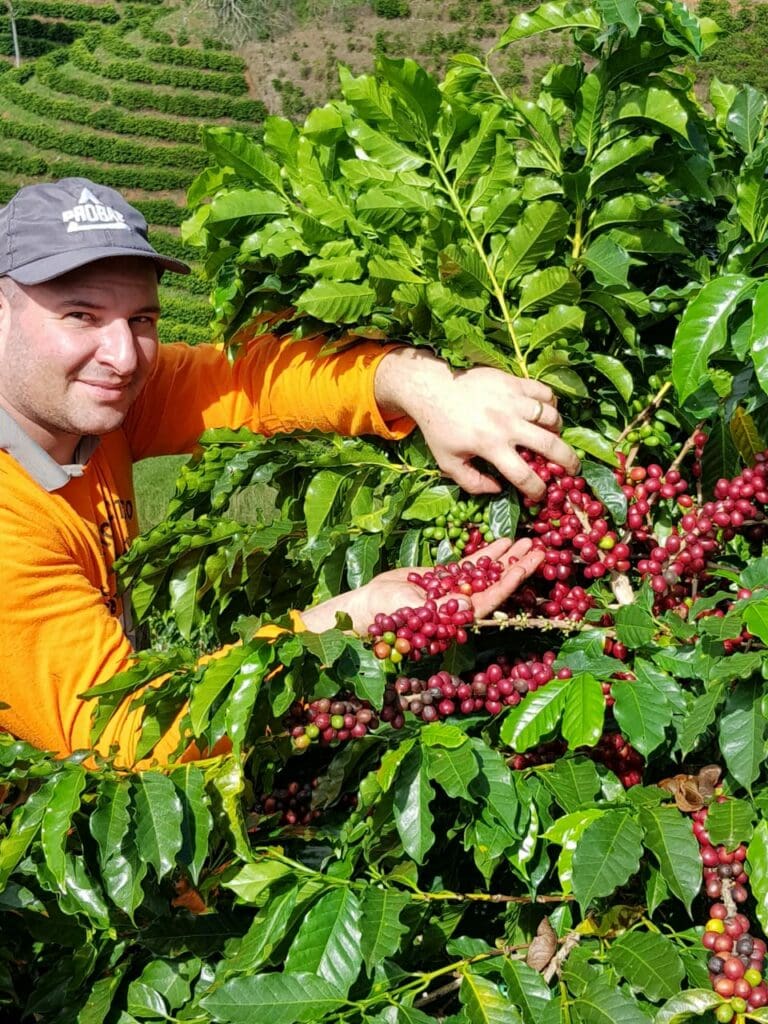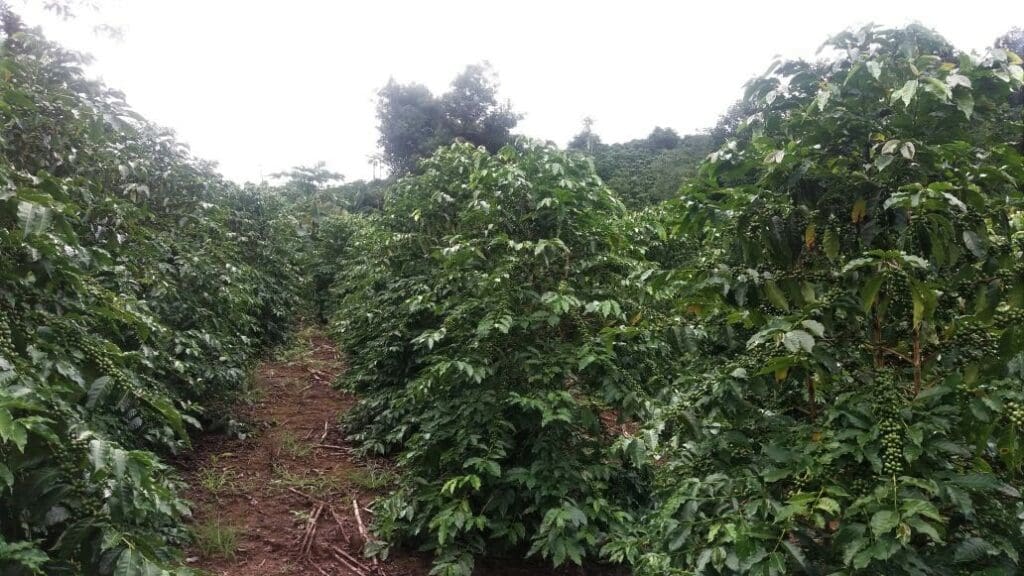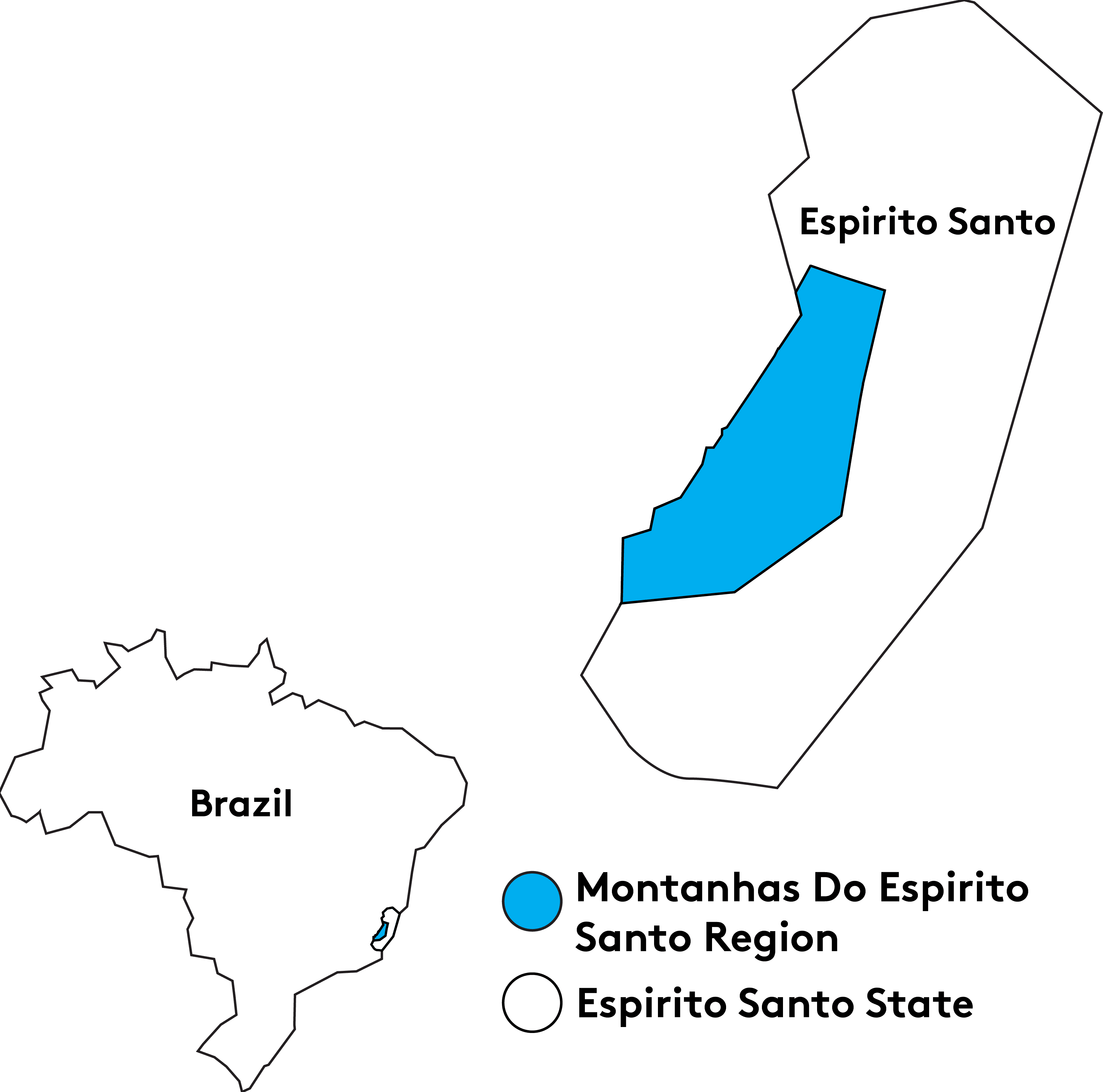Mário José Zardo is a third generation coffee producer living in the Alto Caxixe community in the Montanhas do Espírito Santo region of Brazil. The Zardo family’s passion for coffee farming begins with Mário José’s grandfather, Honorio Zardo, who originally began farming in the city of Pindobas. When Honorio decided to uproot and move to another region in 1970, one of his eleven children, José Zardo, Mário José’s father, decided to remain in Espírito Santo and follow his passion for coffee farming.
José Zardo settled in the community of Caxixe, eventually caring for 20,000 coffee trees. This is where Mário José was born and raised, learning all about coffee cultivation from his father. It was through Mário José’s inspiration that his father began depulping coffee in 2004, seeking added quality and value. In 2010, Mário José would take responsibility for 24,000 coffee trees of his own.
In 2014, Mário José married Lucinéia Cesconetto. He went on to open his own coffee roaster, and began planting coffee with his father-in-law. Today, Sítio Sesconetto’s coffee production covers 3 hectares, yielding 150 bags of coffee annually. His motivation is still in seeking out quality improvements for his crops, hoping to produce the best coffee possible.
This lot of Red Catucai underwent Pulped Natural processing. Catucai was developed as a cross between Icatu and Catuai. The first selection was made in 1988 by researchers at the then Brazilian Coffee Institute (IBC) in a population of the Red Icatu cultivar. After generations of breeding and selection in both Minas Gerais and Espírito Santo, the program gave rise to cultivars with red fruits and yellow fruits, then named Catucai.



